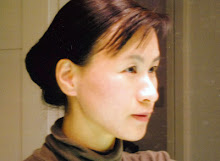
Carl Andre
Lever (1966)
Materials and Techniques: 137 firebricks. Dimensions: 11.4 x 22.5 x 883.9 cm.
National Gallery of Canada
[Online Image], Available at <> [Accessed on 6th February, 2010]Walter Benjamin used to say;
‘In even the most perfect reproduction, one thing is lacking: the here and now of the work of art—its unique existence in a particular place. It is this unique existence—and nothing else—that bears the mark of the history to which the mark has been subject.’
I think Carl Andre succeeded in suggesting how to cope with one of the modern intelligentsia’s fear which was explained by Walter Benjamin as above. He uses construction materials as pure as they are, and install them tidily with his at most attention, then completely clean off the sign of the artist’s existence from his work.
It is hard tell if he is doing it on purpose but mysteriously, we can see the absence. Absence is visible. For example; we can see the person who didn’t come to the class that day, or alternatively, we can’t tell his or her absence without seeing it. Our sense is super advanced and we can recall the scene of past experiences or even imagine the future which hasn’t arrived yet. To the consequences, as he try to leave out his artistic efforts from the works, unnatural feeling about the objects and absence of artist become conspicuous.



